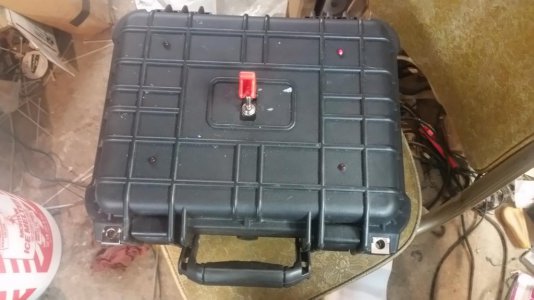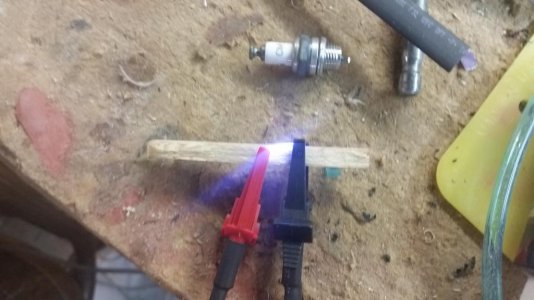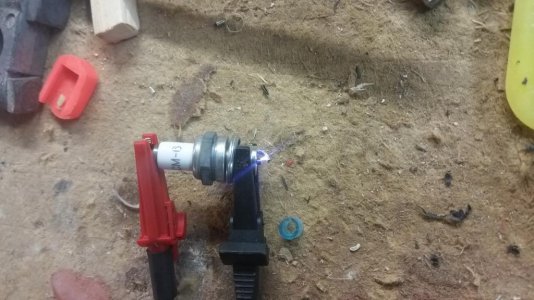- Joined
- Apr 29, 2019
- Messages
- 2,250
Well I took a detour back to the ignition box. I now have the actual circuit all bread boarded up and have started to assemble it into a waterproof case. Of course as I always seem to do I added complexity as I progressed. I have 4 red flashing LEDs to warn that it is powered up. I am estimating it to have 20,000 volts of output. I have added an interlock so that if the case is open the power shuts off. For now I have gone with the original plan of the relay and ignition coil. This setup is giving me about a 3/4 inch long very bright blue nearly continuous spark. when connected to the spark plug I have opened the gap way up and still have a very hot spark that will ignite paper instantly. I am getting close to having it all installed into its water proof case. I will post pics when I finish it. Just waiting for the big brown truck to bring some more parts to mount everything in the case..
I do not know how long the relay will last with this abuse, so I have a spot in the case for a couple of spares and the one in use is in a socket so it will be easy to replace in the field.
I have also designed a solid state spark generator and have gotten as far as drawing up the schematic and the printed circuit board layout. I have neither acquired any parts for this version nor done any actual building of it. So far this version just lives on paper.
I do not know how long the relay will last with this abuse, so I have a spot in the case for a couple of spares and the one in use is in a socket so it will be easy to replace in the field.
I have also designed a solid state spark generator and have gotten as far as drawing up the schematic and the printed circuit board layout. I have neither acquired any parts for this version nor done any actual building of it. So far this version just lives on paper.



